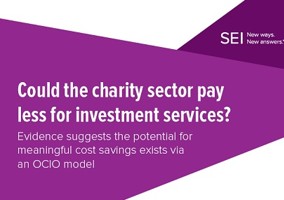Charity pooled funds achieved negative returns for the first quarter of the year, according to newly published figures.
Figures published by Charity Finance found that 30 of the 34 charity funds which submitted data for January to March 2018 achieved a negative return.
Separately data provided by ARC Charity Indices, which incorporates portfolio performance data from over 30 charity investment managers, also showed a negative return.
However, all three property funds achieved a positive return for the quarter, as did HSBC’s Fund for Income.
This is the first time the majority of funds have shown negative quarterly returns since July to September 2015.
Long-term trends positive
But the vast majority of long-term returns figures for the charity pooled funds are positive.
For all 34 funds, the annualised five-year and three-year returns figures are positive, as are the majority of 12-month figures.
Kate Rogers, head of policy and co-manager - charity multi-asset fund at Cazenove, said she was not surprised by the return of stock market volatility in the first quarter of 2018.
She said: “It is perfectly normal to expect intra-year pullbacks of this size. In 24 out of the last 32 calendar years we have seen a fall in the UK equity market of greater than 10 per cent within the year; in only nine of those 24 years did the market generate a negative return for the full year.
“Volatility provides active investors with opportunities to add value and we believe the pullback has been a helpful reset for markets.”
Rogers said that the FTSE 100 went from a high of 7,793 in mid-January to a low of 7,073 in early February and had recovered since.
She said: “In fact, if you had taken the opportunity to add to equities in February you would have benefitted as markets have bounced back. At the end of April UK equity markets are almost back to the levels they started the year.
“Charities invest in equity markets as they are more likely to generate both a return to spend on their charitable activities and protect the assets against inflation over the long term. The cost of this improved return over the long term is short term oscillations in investment values.
“The successful charity investors look through the noise and take advantage of the opportunities that volatility provides to buy good quality assets at knock down prices.”
|
Related articles












